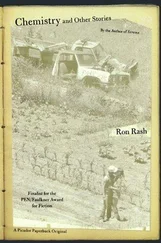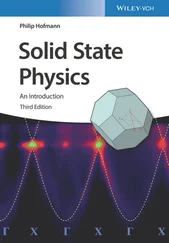Figure 1.42 (a) Crystal structure of CaCu3Ti4O12.
Modified from E. S. Bozin et al., J. Phys. Condens. Matter16, S5091 (2004).
(b) The brownmillerite structure.
Modified from G. J. Redhammer et al., Amer. Miner.89, 405 (2004).
(c) The La2Ni2O5 structure.
Modified from J. A. Alonso et al., J. Phys. Cond. Matter 9, 6417 (1997).
(d, e) A 2D section through the perovskite structure showing corner‐linked BO6 octahedra in which different cations B, B′ may be either (d) disordered or (e) ordered: A‐site cations are omitted for clarity; (f) structure‐field map showing the effect of A and B sizes on structure type; (g) crystal structure of BaNiO3 as an [001] projection with some NiO6 octahedra emphasised: space group P63/mmc; a = 5.629, c = 4.811 Å; atomic positions Ba (2d) 1/3, 2/3, 3/4; 2/3, 1/3, 1/4; Ni (2a) 0, 0, 0; 0, 0, 1/2; O 6( h) x, 2x, 1/4: x = 0.1462; (h) one column of face‐sharing octahedra parallel to c. O and Ba positions together form BaO3 layers; (i–l) different polytypes and labelling notations. For each, h and c layers and the number of layers in the unit cell are shown: (i) (ch)2 BaRuO3, (j) (cch)2 BaTiO3, (k) (cchc)2 Ba8Ta4Ti3O24, (l) (cchcc)2 Ba10Ta7.04Ti1.2O30.
A wide range of compositions, AA′ 3B 4O 12form the same structure as CCTO. A is an intermediate‐sized alkali, alkaline earth or rare earth cation such as Na +, Ca 2+, La 3+, Pr 3+, Nd 3+or a lone pair p‐ block cation Pb 2+, Bi 3+that occupies the 8‐coordinate sites; A′ is either of the Jahn‐Teller active ions Cu 2+or Mn 3+that occupies the square planar sites; B is a transition metal such as Ti, V, Mn, Fe, Co, Rh, Ir, or a p‐ block element Ga, Ge, Sn, Sb that occupies the octahedral sites. The structures are cubic with a = 2 a p, where a pis the lattice parameter of the perovskite subcell.
The electrical and magnetic properties of these materials depend on the valence states of the transition metal cations that occupy A′ and B sites. These may change if charge disproportionation phenomena occur, such as disproportionation at low temperatures of Fe 4+into Fe 3+and Fe 5+in the Fe analogue of CCTO or if temperature‐dependent local electron transfer or redox reaction occurs between cations such as Cu 2++/Fe 4+and Cu 3+/Fe 3+in LaCu 3Fe 4O 12. Novel phenomena and properties may be anticipated following in‐depth studies of structure–property correlations in such materials.
1.17.7.5 Anion‐deficient perovskites
Anion‐deficient perovskites occur commonly and, in cases where the anions are ordered, a variety of more complex structures are generated. As a consequence of anion deficiency, the B site coordination number must reduce from six on average. In the brownmillerite structure, Ca(Fe,Al)O 2. 5, Fig. 1.42(b), the average B site coordination number is expected to be five and this is achieved in a layered structure with alternating sheets of tetrahedra and octahedra. In LaNiO 2. 5, Fig. 1.42(c), the Ni coordination is a mixture of NiO 6octahedra and NiO 4square planes which are ordered to give a 2 × 2 × 2 supercell relative to the perovskite subcell. In the a and b directions, octahedra and square planes alternate but in the c direction chains of corner‐sharing octahedra form which are connected to adjacent chains by the square planar units. The Ni polyhedra exhibit antiphase tilting along the three unit cell axes and therefore, may be described in Glazer notation as a – a – c –. This material was produced from LaNiO 3by hydrogen reduction, but a residual amount of oxygen remained in the O(4) sites, giving a composition, for the particular material that was studied, of LaNiO 2. 56(1); possibly, using different preparative conditions, materials with different oxygen contents could be prepared.
The above are two examples of anion‐ordered crystal structures which occur at specific compositions. Other anion ordering arrangements are known both at these and other compositions. In addition, solid solutions form in many systems in which the anion content is variable and can be represented by the general formula ABO 3–δ. In these, the oxygen vacancies may be distributed at random through the perovskite structure or locally ordered structures may form in which small domains of a particular structure type are distributed at random through a disordered perovskite network.
1.17.7.6 Stoichiometry–property relations
The perovskite structure, with two different‐sized cations and several possible cation charge combinations, occurs with a very wide range of compositions. In addition, defect perovskites form in which there are either cation or anion vacancies. Defects, solid solutions and various kinds of properties are all considered in later chapters. All we wish to note here is the incredible range of properties found in materials with perovskite‐related structure whose composition has been adjusted to optimise a particular property. Almost every physical property imaginable has been found in materials with the perovskite structure by changing their composition and/or defect structure; for this reason, perovskite is sometimes referred to as an inorganic chameleon! A selection of perovskites and their properties is listed in Table 1.19.
1.17.7.7 Cation‐ordered perovskites
Oxide perovskites ABO 3have an overall cation charge of 6+ which allows the possibility of different cation charge combinations. Since the A and B sites are also very different in size, most elements in the periodic table can be found, somewhere, in a perovskite structure. In complex perovskites with more than two cations, many examples are known of cation ordered arrangements on A and/or B sites, such as in double perovskites with general formula A 2(BB′)O 6. In these, two different cations are arranged on the B sites in the same way that the anions and cations are arranged in the rock salt structure. A 2D section through the structure of Ba 2FeMoO 6, Fig. 1.42(e), shows FeO 6and MoO 6octahedra that alternate in an fcc arrangement. In ordered, undistorted structures such as this, the structure is still cubic but the unit cell edge, a , is twice the length of the perovskite subcell lattice parameter, a p.
Table 1.19 Perovskites: some composition–property correlations
| Composition |
Property |
| CaTiO 3 |
Dielectric |
| BaTiO 3 |
Ferroelectric |
| Pb(Mg 1/3Nb 2/3)O 3 |
Relaxor ferroelectric |
| Pb(Zr 1−xTi x)O 3 |
Piezoelectric |
| (Ba 1−xLa x)TiO 3 |
Semiconductor |
| (Y 1/3Ba 2/3)CuO 3−x |
Superconductor |
| Na xWO 3 |
Mixed conductor (Na +, e −); electrochromic |
| SrCeO 3:H |
Proton conductor |
| RE TM O 3−x |
Mixed conductor (O 2−, e −) |
| Li 0.5−3xLa 0.5+xTiO 3 |
Li +ion conductor |
| A MnO 3−δ |
Giant magnetoresistance |
RE = rare earth; TM = transition metal.
Whether the B site cation arrangement is ordered, Fig. 1.42(e) or disordered, (d) depends on whether the increased entropy associated with cation disorder would offset the loss in enthalpy on forming a disordered structure containing dis‐similar cations. This is because cations of dissimilar size and charge are more likely to segregate into clusters or to form an ordered arrangement over two sets of lattice sites than to randomise over a single set of lattice sites, leading to a higher lattice energy or more negative enthalpy of formation for an ordered structure than for a disordered one. The reason why partial or complete disorder is observed in many structures, especially at high temperatures, is because of the increasing influence of the TΔS term in the overall free energy, ΔG (from ΔG = ΔH − TΔS ), which offsets the increased lattice energy of an ordered structure. One effect of increasing temperature is therefore to introduce structural disorder through the term TΔS . A similar result may arise by compositional change, or doping. For example, Ca 2FeReO 6has B‐site order of Fe and Re, but partial substitution of La onto the A sites, in the solid solution Ca 2−xLa xFeReO 6, causes (indirectly) the B cations to disorder.
Читать дальше












